Between 2010 and 2018 around 15 million trees were planted with government funding. However, the committee for Climate Change (CCC) said that this was not enough in order to reach its 2050 target.
The Committee on Climate Change (CCC) is made up of experts in science, economics, and business. Although 15 million trees were planted over an 8 year period, the CCC explained that if every household in the UK with a garden planted just two trees, it would cover only 3% of the 2050 target. The CCC has also said that to increase woodland cover by 4% to meet its 2050 net-zero carbon target. This means planting around 1.5 billion new trees.
Planting trees helps fight climate change by absorbing carbon dioxide through photosynthesis. Back in 2019, Ethiopia broke records by planting 350 million trees in just 12 hours. They had a wider goal of planting 4 billion trees between May and October of the same year.
Planting smaller trees, such as bare root plants, will help to reach the 2050 target faster and at a lower cost. Bare root plants cost less than container-grown trees because they are lifted without soil around their roots. They are available during dormancy, usually from November to March. Using the right accessories when planting will also help to protect them from deer and other wildlife.
1. Tree Care Tips: How to plant, water and maintain your trees
2. Pleached Photinia Red Robin: A Stunning Screening Solution
3. What trees are best for new build gardens?
4. Our Guide to Pleached Trees
5. Visit Our Nursery to Pick your Own Trees!
Planting Laurel is a great way to screen overlooking windows. At King & Co we stock Cherry and Portuguese laurel trees. Both of which are a great way to add privacy to exposed gardens!
Cherry Laurel is a fast-growing evergreen with large, glossy green leaves. In spring, upright clusters of small, fragrant white flowers appear. These are followed by red to black cherry-like fruits in autumn. If you want to avoid the berries, prune the tree hard after flowering. This also encourages fresh new growth for summer.
Our current batch has a 1.7–1.9m clear stem that won’t grow taller. A dense head of foliage sits above a 6ft fence, forming a natural “stilted hedge.” Plant trees 1.2–1.5m apart for a seamless green screen. This setup is ideal for blocking unwanted views like satellite dishes, windows, or extensions. You can also use a single tree to screen a specific area.
Cherry Laurel grows quickly, around 30–50cm per year once established, and can reach up to 8m tall. It responds well to heavy pruning, so you can keep it formal or let it grow naturally. Either way, it’s a tough, attractive option for privacy and year-round greenery.
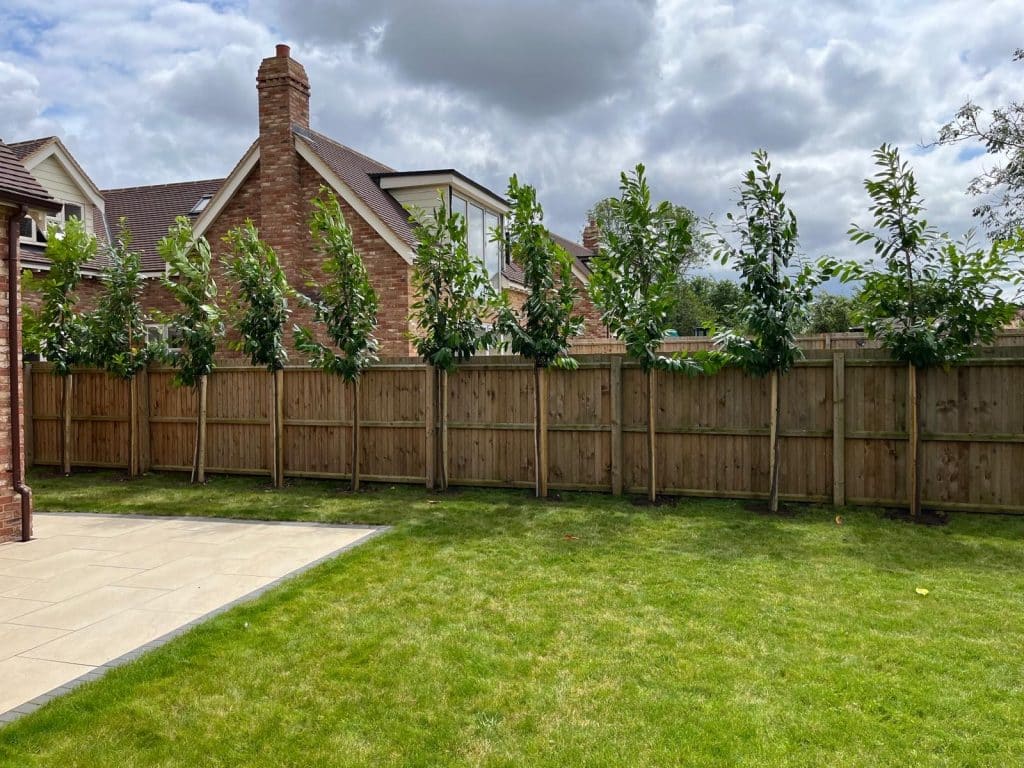
Portuguese laurel is another tough, hardy evergreen ideal for year-round screening. It has slightly glossy, dark green leaves that grow from purple-tinted young stems. In spring, clusters of fragrant white flowers appear, followed by small purple fruits in autumn.
Our current batch has a clear stem of around 1.6m, with a dense heads of foliage measuring 90–110cm. The foliage sits above a standard 6ft fence, creating a raised or “stilted” hedge. Like Cherry laurel, these trees are perfect for screening unwanted views like neighbouring windows, satellite dishes, or extensions. They can also be planted 1.2–1.5m apart to create a continuous screen, or place a single tree to block a specific view.
Portuguese laurel has a dense growth habit and reaches 6–8m tall when mature. It responds well to annual clipping, making it easy to maintain a clean, formal shape.
We also stock Cherry laurel in pleached as well as standard form. Our current batch of pleached trees have clear stems of 1.8m with a trained framework of foliage. The foliage panel measures 1.5m wide by 1.2m high and sits above a standard 6ft fence, perfect for creating a stilted hedge. Pleached trees are ideal if you prefer a more formal, structured look over natural growth.
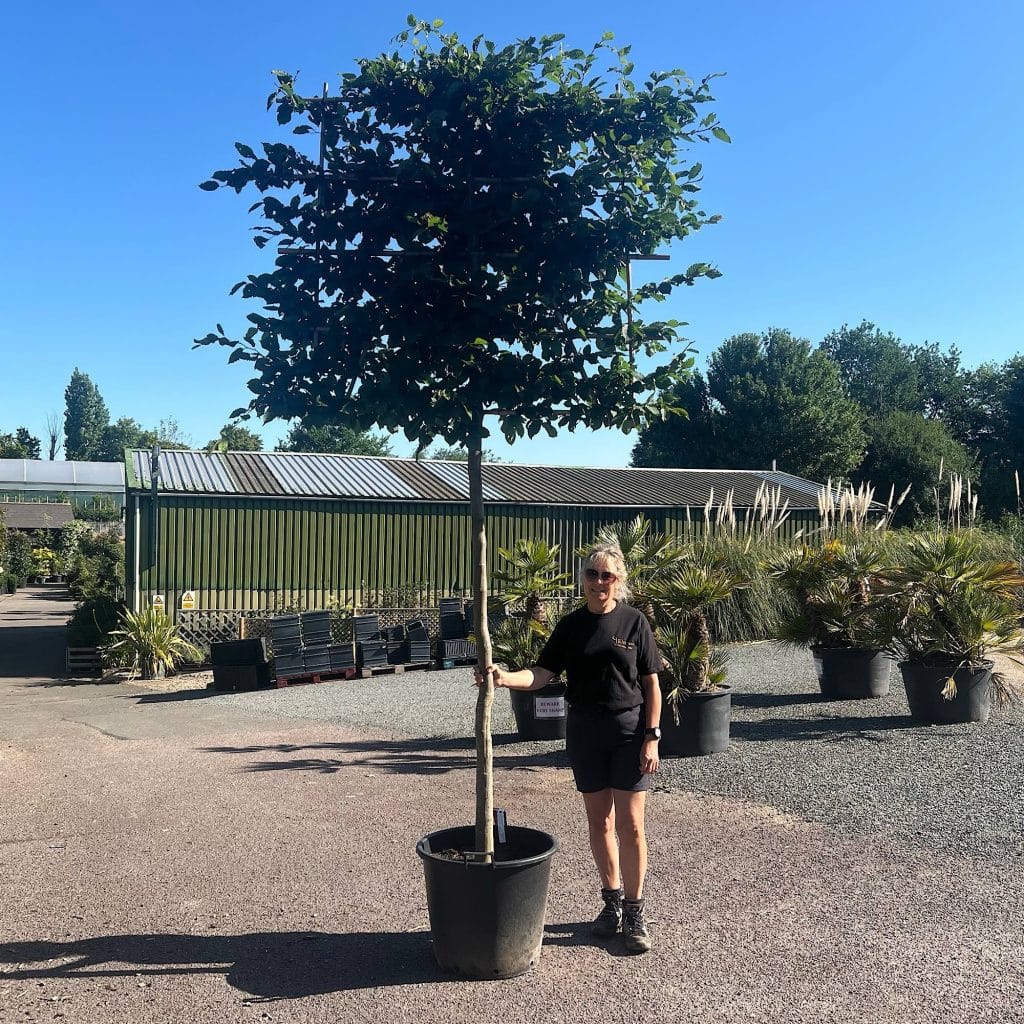
1. Tree Care Tips: How to plant, water and maintain your trees
2. Pleached Photinia Red Robin: A Stunning Screening Solution
3. What trees are best for new build gardens?
4. Our Guide to Pleached Trees
5. Visit Our Nursery to Pick your Own Trees!
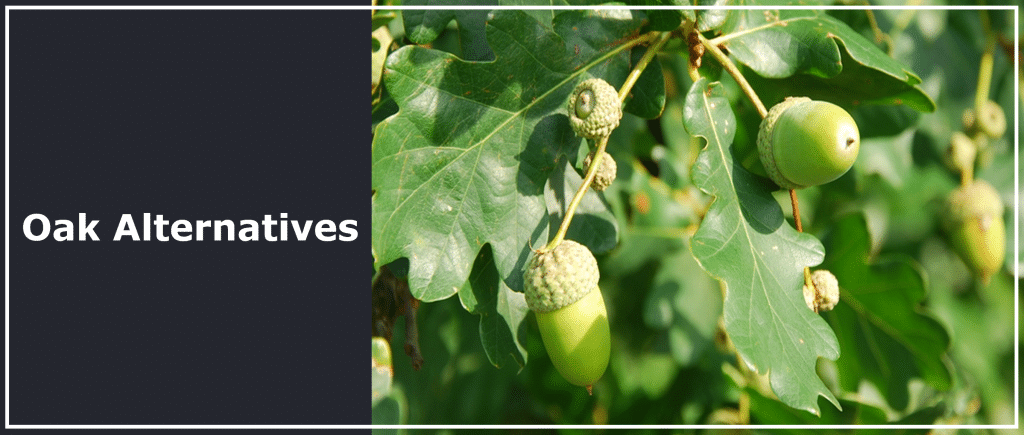
As you may know, Oak Processionary Moth (OPM) has become established in much of Greater London and surrounding areas. To minimise the spread of OPM and protect the UK from further infestations, strict restrictions on the movement of Oak plants have been introduced. Due to our nursery’s location within the OPM management buffer zone, we are not currently stocking oak trees with a girth over 8-10 cm. Many customers have asked about suitable Oak tree alternatives, so we’ve compiled a list of options below…
Please note that we do have a limited supply of smaller English oak trees (1.75-2m tall) in stock. However, these can take several weeks to replenish once sold out. To ensure you have alternatives when our English oak is unavailable, we recommend reviewing the following list.
Silver birch. This medium-sized native tree is known for its striking white bark. As it matures, the bark at the base forms dark, rugged cracks. Its elegant shape features upright branches that gently weep at the tips. In spring, it produces light green, diamond-shaped leaves and brown-yellow catkins. The leaves turn a vibrant yellow in autumn. Silver birch can grow up to 20 metres tall. It’s a great choice for gardens, verges, parks, and urban spaces.
Rowan. Sorbus aucuparia is a tough and adaptable native tree. It grows well in many conditions, including urban areas and poor soils. This fast-growing tree starts with an upright shape. As it matures, it forms a rounded canopy and reaches about 10 meters tall. In late spring, it produces clusters of small white flowers. These are followed by bright orange-red berries that feed migrating birds in winter. Its green, pinnate leaves have serrated edges. In autumn, they turn a striking yellow to orange-red before falling. Sorbus aucuparia is perfect for gardens, parks, and woodlands. It offers beautiful seasonal interest all year round.
Small-leaved lime. Tilia cordata suits larger gardens, parks and woodlands well. Its rounded leaves have dark green tops and grey undersides. This tree also produces fragrant yellow to white flowers that attract bees and insects. It tolerates air pollution well and responds nicely to clipping. This makes it a flexible choice for many landscapes. Like Oak, it is native to the UK and thrives in countryside settings. Its pollution tolerance also helps it do well in urban areas.
Hornbeam. Carpinus betulus is a popular and versatile native tree in the UK. Its dense form makes it ideal for structure, screening, and hedging. It also works well as a specimen tree. Hornbeam grows well on many soil types, including clay. It has bright green, oval-shaped leaves that turn rich orange-brown in autumn. These leaves often stay on the tree through winter, adding year-round interest.
Green beech. Fagus sylvatica is a large, striking tree with a broad, spreading canopy. Its new leaves appear silky and bright green, then deepen to a glossy dark green. In autumn, the foliage turns vivid shades of yellow, orange, and brown. Many leaves stay on the branches through winter, offering screening and structure. Beech prefers well-drained soil. For clay-based ground, we recommend choosing Hornbeam instead.
Both Hornbeam and Beech often keep their dried, brown leaves through winter until new green leaves appear in spring. While the leaves remain, they provide privacy and screening during the colder months. Please note that harsh wind or cold can cause the leaves to drop!
Hopefully this helped to highlight some of our favourite Oak tree alternatives. Please contact us if you have any questions, our knowledgeable staff are always on hand to answer any questions you may have. Remember you can always visit the nursery to pick your own trees!
1. Tree Care Tips: How to plant, water and maintain your trees
2. Pleached Photinia Red Robin: A Stunning Screening Solution
3. What trees are best for new build gardens?
4. Our Guide to Pleached Trees
5. Visit Our Nursery to Pick your Own Trees!
Back in 2019, King & Co were pleased to welcome then Prime Minister hopeful Boris Johnson to the Tree Nursery in Braintree, Essex. His visit was part of the Conservative leadership campaign around the Essex area. Leadership contender Jeremy Hunt instead visited nearby Chelmsford.
James Cleverley, MP for Braintree, hosted the visit to King & Co Tree Nursery. He had previously visited in 2015 to see the RHS Chelsea Gold Medal-winning topiary F1 car pit scene.
During the visit, Boris Johnson toured the nursery. He walked through tree lines featuring screening trees, fruit trees, and Sorbus varieties. The visit drew local and national press to the nursery, and both customers and King & Co staff had the chance to meet him and raise questions. Local councillors also spoke with Mr Johnson in the retail plant area. This space includes topiary, evergreen hedging like Photinia, and bee-friendly plants such as Lavender.
Mr Johnson then assisted the production and logistics teams. He helped load birch trees and modelled some shrubs. He showed special interest in the Austrian pine trees and even asked about buying an apple tree for his own garden!
King & Co Tree Nursery is celebrating 40 years in business, having started in 1978. Since then, we’ve supplied trees and plants for many high-profile projects. These include the Stansted Rail Link, Sizewell Power Station, the Braintree Bypass, and HMP Chelmsford. We’ve also worked with Williams F1, Lord R.A. Butler, Felsted and Hallingbury Schools, the RHS, Essex Wildlife Trust, Braxted Park, the Ipswich and Martlesham Bypass, and carried out clearance work for the Essex section of the M25.
We offer a wide range of high-quality semi-mature trees, shrubs, hedging, and topiary. Our collection makes us one of the UK’s leading tree nurseries. Many of our plants are available to buy online and can be delivered overnight to your door, depending on size and weight.
We’re open 5 days a week and stock over 2,000 container-grown semi-mature trees. These include Acer, Oak, Birch, Cherry Trees and many more. If you’re interested in larger items or bulk orders, we’re happy to provide a delivery quote. Our stock changes regularly, so please contact us if you’re looking for something specific.
Our knowledgeable staff also offer advice regarding the aftercare of your new trees and plants. This advice is essential to maintain the best results!
1. Tree Care Tips: How to plant, water and maintain your trees
2. Pleached Photinia Red Robin: A Stunning Screening Solution
3. What trees are best for new build gardens?
4. Our Guide to Pleached Trees
5. Visit Our Nursery to Pick your Own Trees!
Why not add depth to your garden with topiary! Choose from aromatic evergreens, green leaves with golden tips, or dark, glossy, spiky foliage. At King & Co, we offer a range of trees and shrubs ready to shape into striking, ornamental forms that bring nature and design together!
1. Ilex crenata. Japanese holly is a top pick for resisting Box blight and Box moth. It has dense foliage that clips well too, this makes it ideal for neat ball or cone shapes.

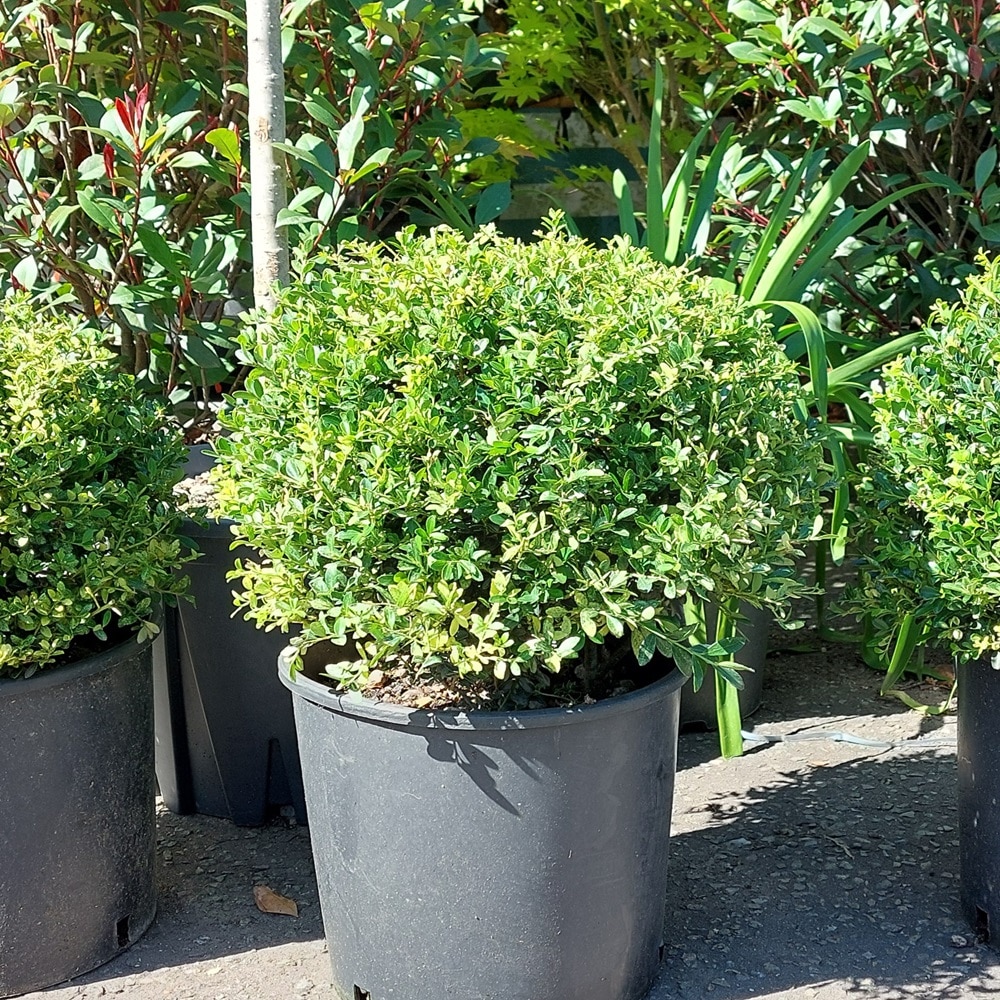
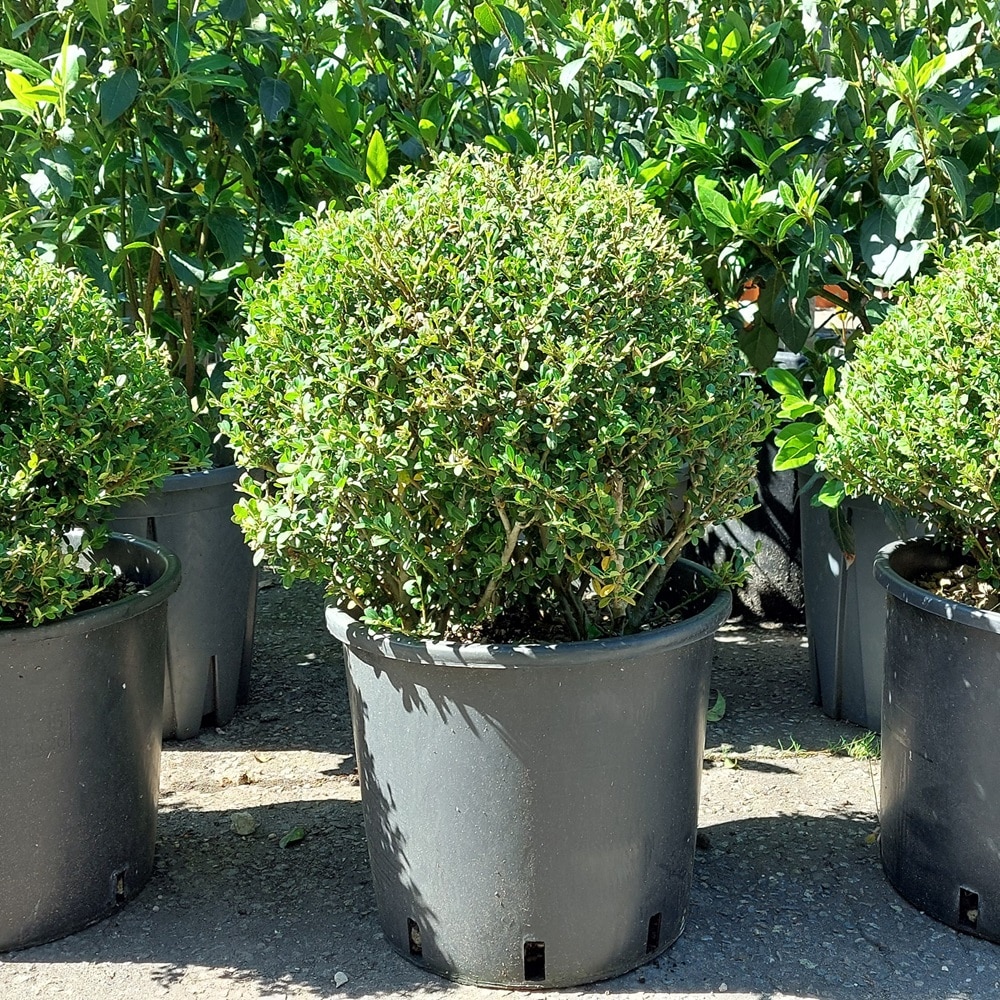
2. Euonymus ‘Jean Hugues’. This small, compact evergreen shrub has an upright, bushy shape and small, glossy green leaves. The tough foliage handles clipping well. ‘Jean Hugues’ is perfect for edging borders or creating low, formal hedges. It grows to about 1m tall and wide. With a look similar to Box, it makes a great alternative, without the risk of Box blight or Moth.
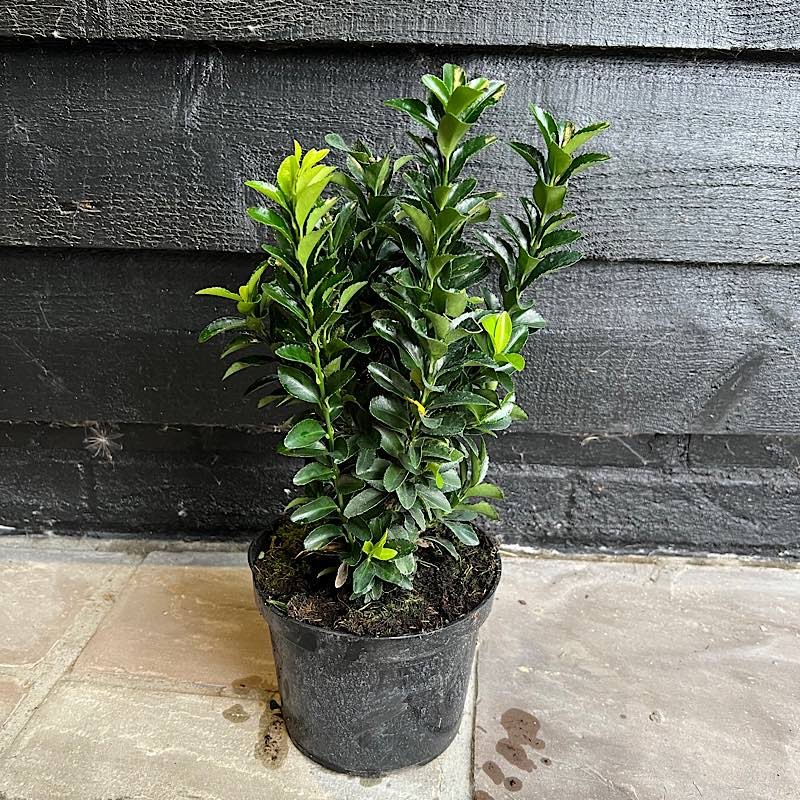
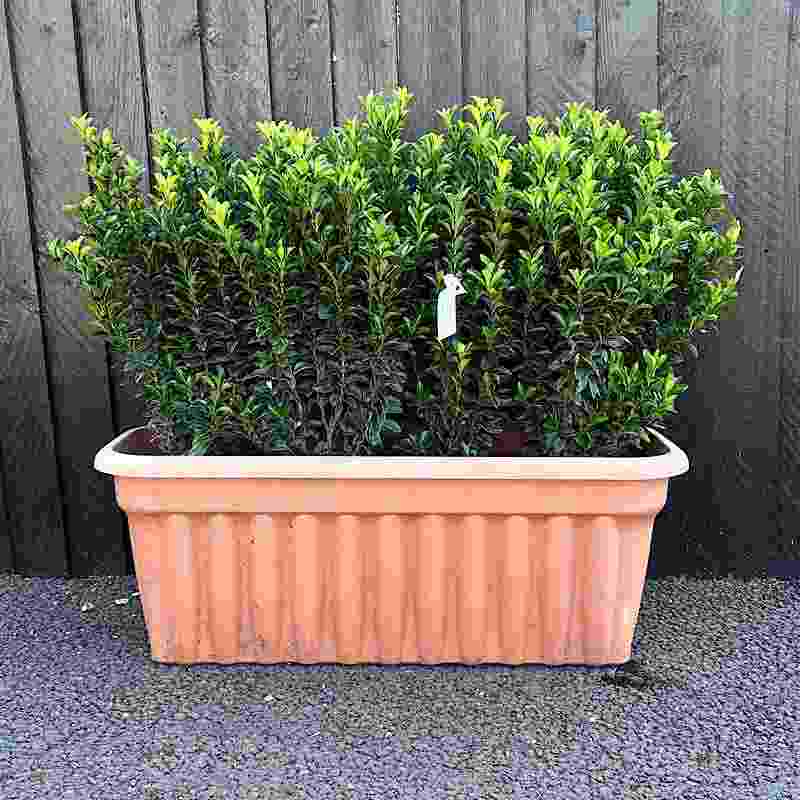
We offer Cupressocyparis leylandii ‘Castlewellan Gold’ in spiral and pom-pom shapes. This evergreen conifer has flat sprays of light green, scalelike foliage. In spring and summer, the leaves take on yellow and gold tones, then darken slightly in winter. Trim the young growth twice a year with shears or sturdy scissors to keep the shape sharp and striking.
Half standard trees are a fantastic choice for bringing both height and visual interest to smaller gardens. They can also create a particularly striking look when placed near doorways or along driveways. You’ll find it easy to keep their lovely round shape with regular trimming, or you can let them develop into a larger sphere or a charming small tree.
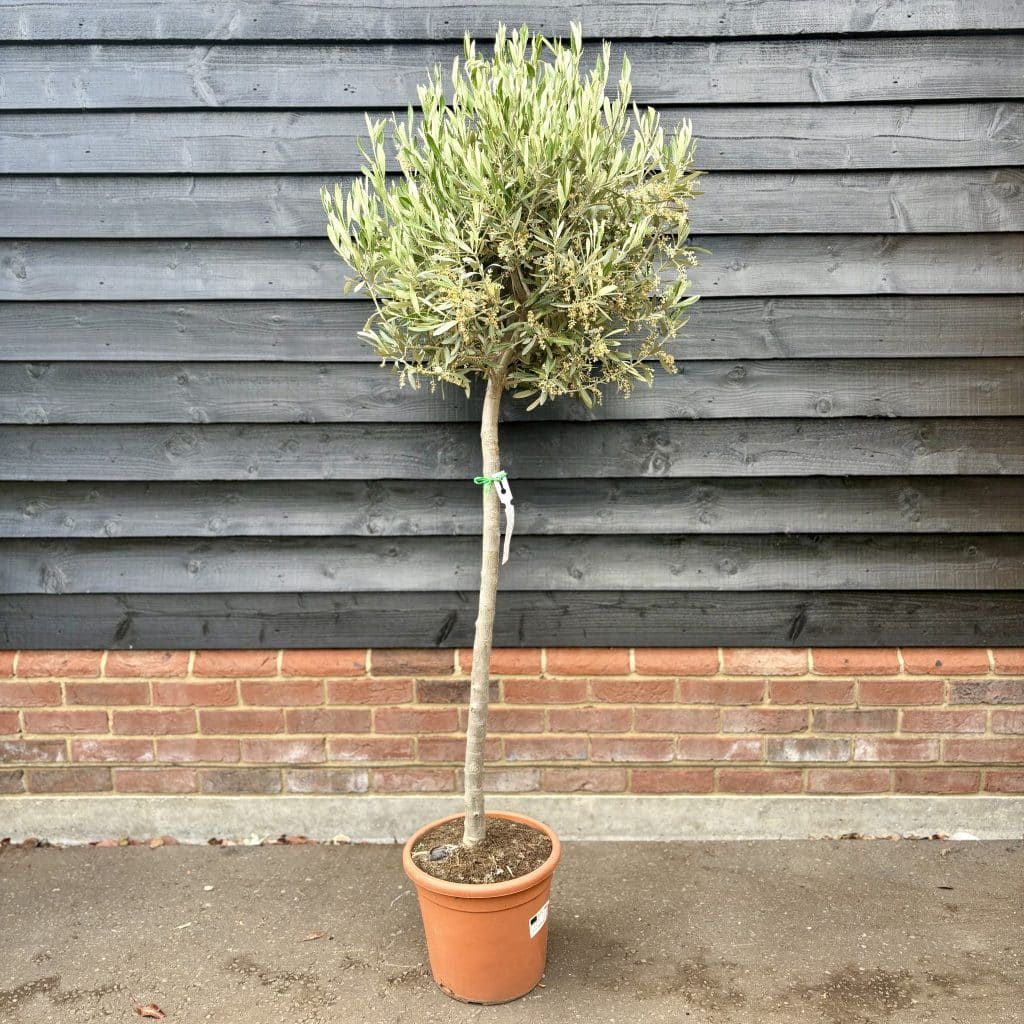
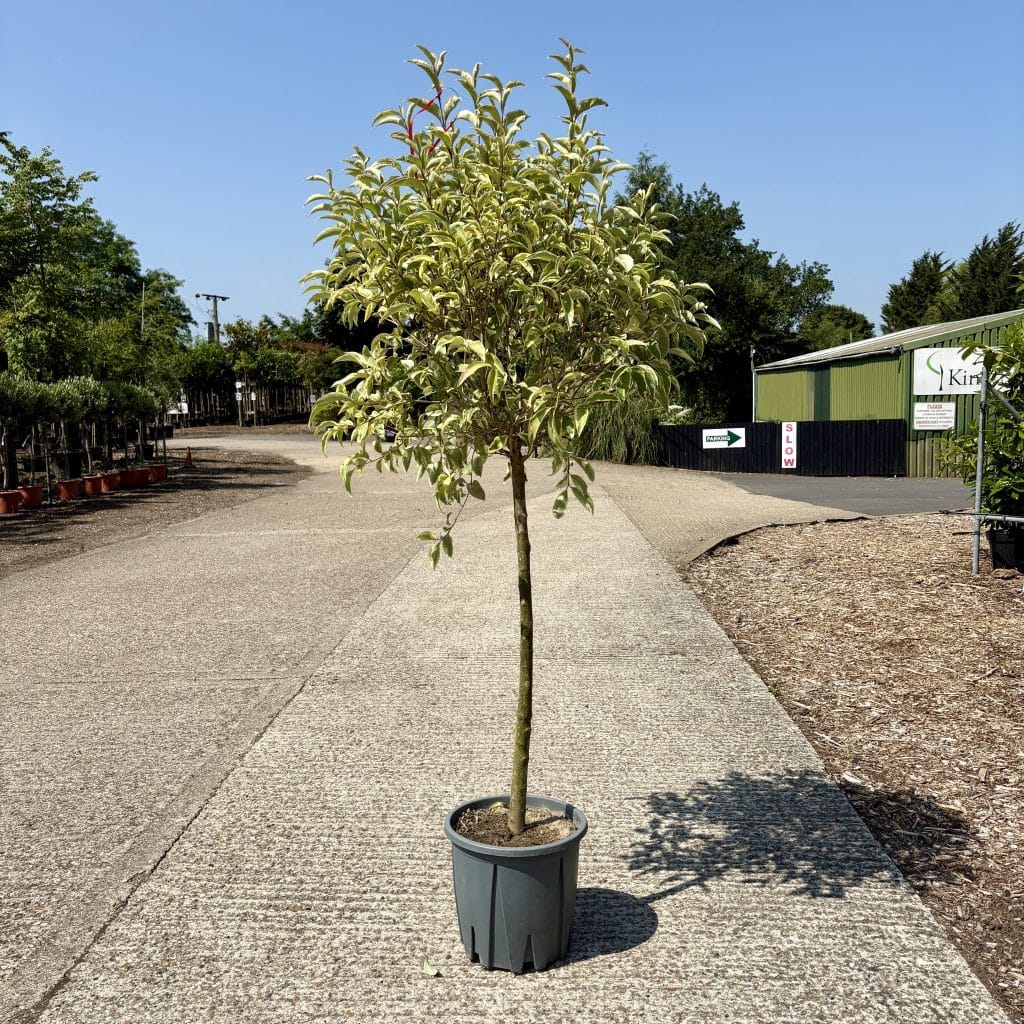
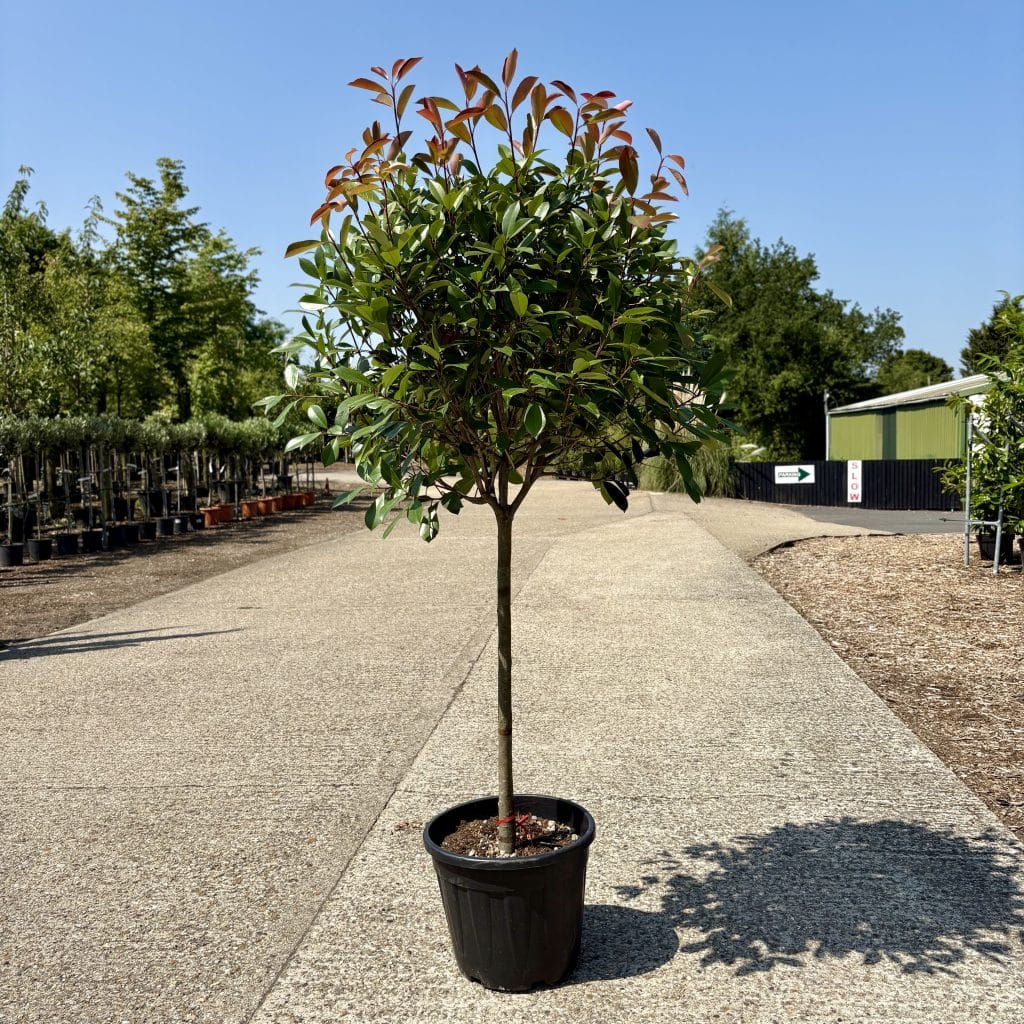
Hopefully this article helped to explain how you can add depth to your garden with topiary! . If you have any questions, feel free to get in touch, our team is always happy to help. And don’t forget, when you visit the nursery, you can hand-pick your own trees.
1. Planting Styles: Finding the perfect style for your garden
2. Pleached Photinia Red Robin: A Stunning Screening Solution
3. Are Half Standard Trees Good for Small Gardens?
4. Trees for Natural Summer Screening: Our favourite candidates for privacy and shade!
5. Visit Our Nursery to Pick your Own Trees!
Pleached laurel are one of our best selling screening trees, creating an above fence screen all year round. Pleached Cherry Laurel trees are fast growing and do well on Essex clay soils.
(more…)Known for naturally blending into the landscape and supporting essential wildlife, native trees are a popular choice for gardens in the British Isles. They are also good for those who want to maintain biodiversity by providing food and shelter for native insects, birds, and mammals.
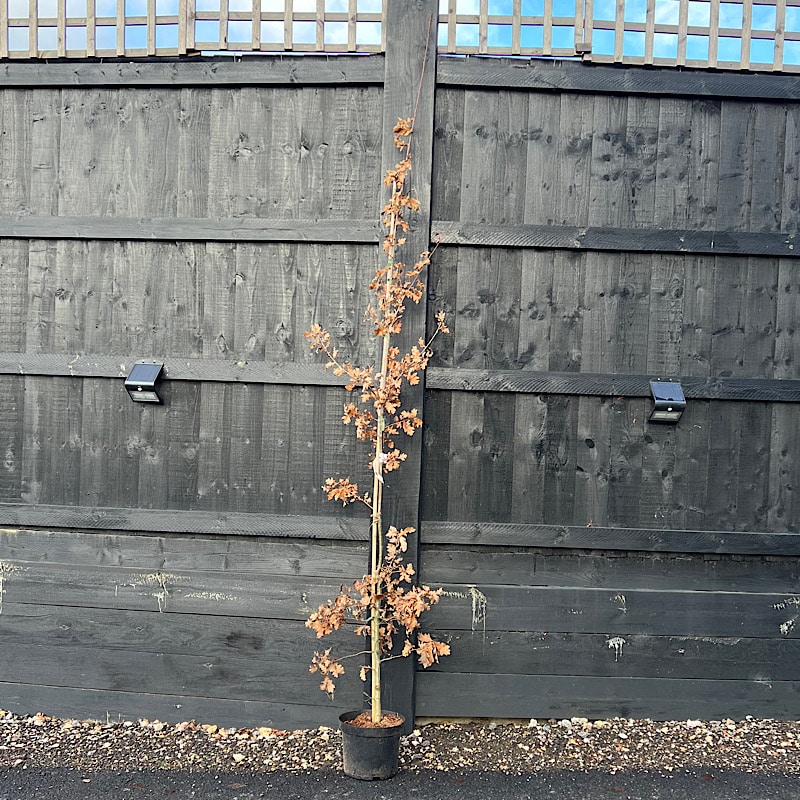
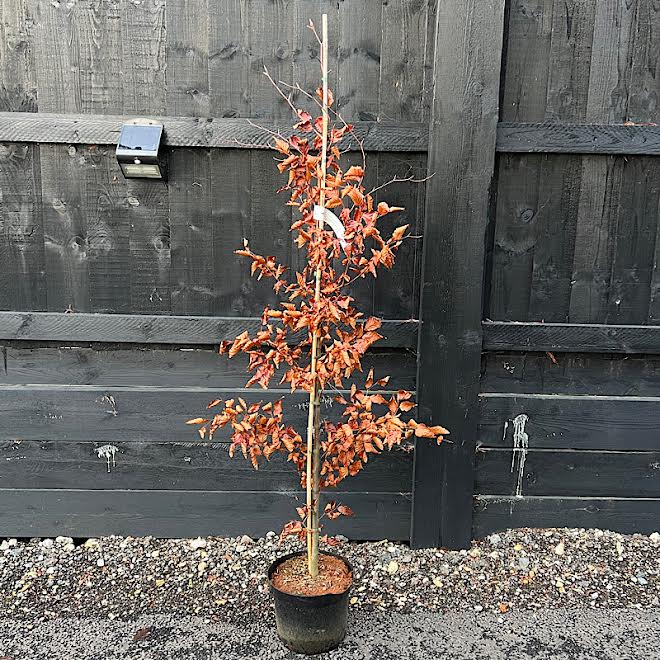
There are native trees for gardens that thrive in almost any soil type and setting. While some varieties can grow too large or require wetter conditions, many are perfectly suited to residential spaces. We’ve grouped our top choices into lists for small and large gardens, take a look and find the right fit for your space!
If you’re working with limited space, several native trees for gardens are ideal for compact plots:
Hawthorn (Crataegus monogyna). A tough and adaptable tree that also supports a wide range of pollinators.
Silver birch (Betula pendula). Known for its light canopy and elegant bark, it’s great for smaller gardens.
Bird cherry (Prunus padus). Offers spring blossom and autumn colour, while attracting birds and insects.
Crab apple (Malus sylvestris). Produces beautiful flowers and small fruits that benefit birds and mammals.
Field maple (Acer campestre). The UK’s only native maple, excellent for autumn colour and wildlife value.
Whitebeam (Sorbus aria). Compact and hardy, with distinctive silvery foliage and red berries.
Note: Many of these native trees for gardens are available as bare root plants during their dormant season. Sizes typically range from 40–60cm, though we can often source bare root specimens up to 2 metres tall. Availability at larger sizes depends on the variety, as some species don’t tolerate being lifted at certain heights.
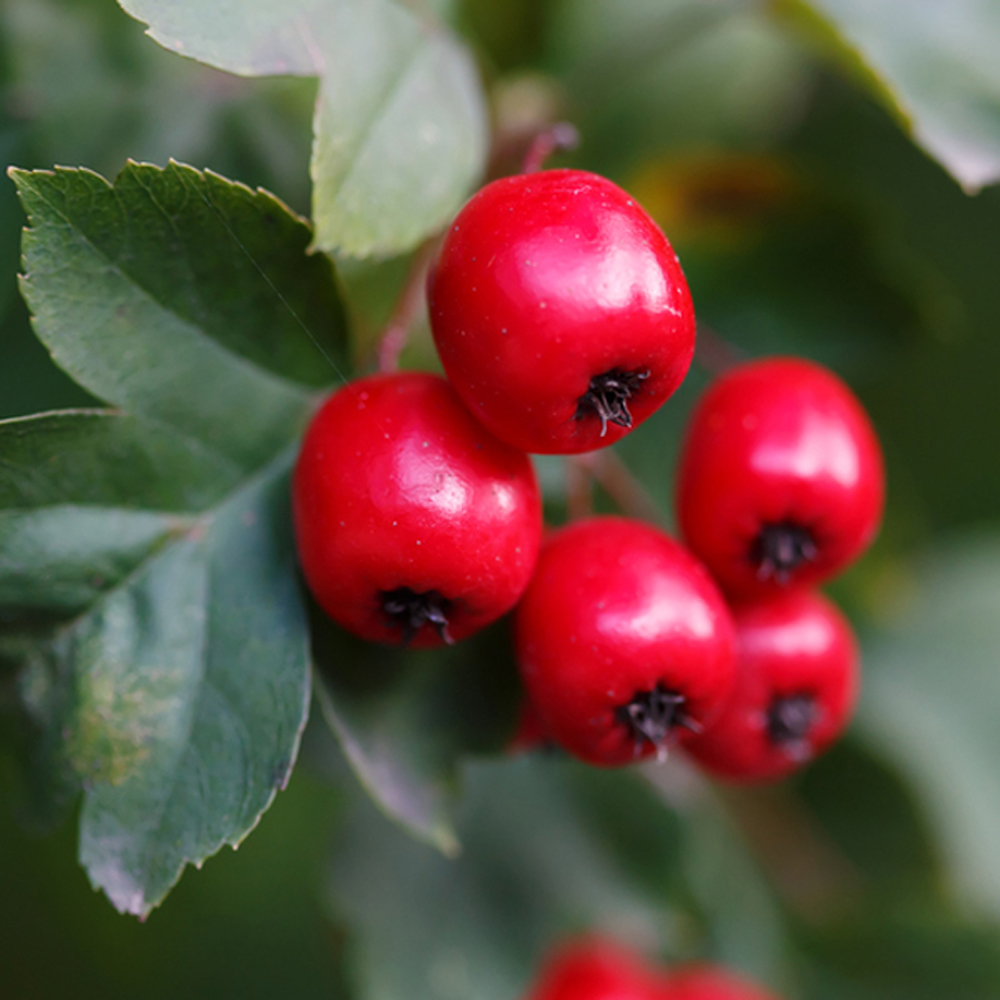
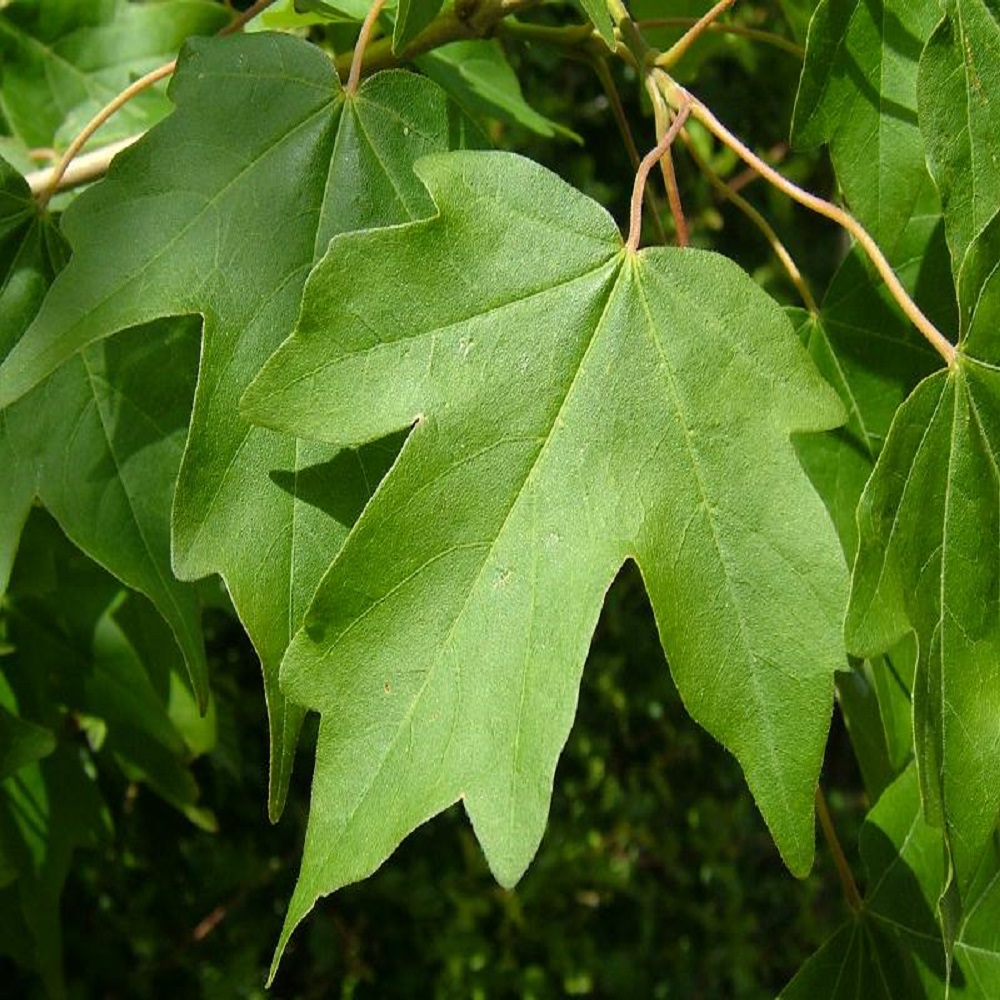
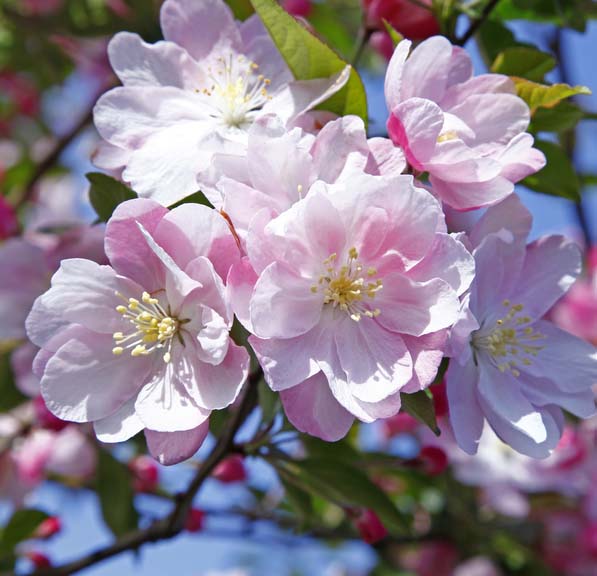
Larger spaces allow for planting more substantial native trees for gardens:
Rowan (Sorbus aucuparia). Valued by wildlife owing to its striking berries. These berries also help to add to the seasonal interest.
Scots pine (Pinus sylvestris). A great choice for adding evergreen structure and offering year-round shelter for birds.
English oak (Quercus robur). A keystone species among native trees and a common sight in lowland woodland across the British Isles. English oak has high-quality timber and supports native wildlife.
Small-leaved lime (Tilia cordata). Attractive to pollinators, with heart-shaped leaves and fragrant flowers.
Hornbeam (Carpinus betulus). Tough and long-lived, especially suitable for clay soils.
Wild cherry (Prunus avium). Offers beautiful spring blossoms and food for birds.
Green beech (Fagus sylvatica). Majestic and dense, ideal as a specimen or hedge in larger gardens.
Common alder (Alnus glutinosa). Tolerates poorly-drained soils and wetter areas, it is ideal for coastal and riverside locations.
Note: Some of the above, like Hornbeam and Beech, can be gown as hedges. They can be suitable for smaller gardens when grown in this form.
English Oak (Quercus robur) is one of the most important native trees. It produces strong hardwood timber and supports rich wildlife. Hundreds of insect species live on oak, like Hairstreak butterflies feed on its flowers and buds. Bats, woodpeckers, and many other birds rely on oak trees too and rotting leaves at the base provide food for many invertebrates.
Hornbeam is another very important native tree. An important component of native woodland in the UK, it will grow to around 20m. It too, is an important source of hardwood timber, and it’s longevity in woodlands was increased by periodic coppicing. Hornbeam will thrive on clay soils, which is why we recommend them in preference to Beech when planting in Essex.
Selecting the correct native tree for your particular situation can be tricky. We will be pleased to advise you on this: Get In Touch
Box blight and box tree caterpillar are notorious for the damage they do to box plants. As a result, many people now seek stronger, more disease-resistant plants. In this article, we highlight our favourite alternatives for low hedging:
Box blight is a fungal disease that damages leaves and stems. Box tree caterpillar is a pest that feeds on the plant. Both can disfigure Box and even kill it. You can try to manage them, but it’s always best to dig out the plant and replace it.
Box Blight. Look for dark spots on leaves that turn brown and drop off to create bare patches. Prune affected areas and clear fallen leaves. This improves air circulation and may help recovery.
Box Tree Caterpillar. Watch for eaten leaves, webbing, or complete defoliation. Remove damaged leaves and hand-pick caterpillars. Insecticides can help. Avoid splashing water on leaves as fungal spores can spread, always water at the base of the plant.
Disinfect pruning tools during and after use. Feed and prune regularly to keep plants strong. Healthy plants are less susceptible to disease.
As many gardeners are now looking for strong alternatives to Box, the nursery trade has responded with a range of excellent options that match Box in form, structure, and versatility.
Almost identical in appearance to box and resistant to box blight or moth caterpillar, Japanese holly is an excellent alternative. It’s a strong choice for low hedging, and works well along paths or garden borders. Its dense growth also makes it ideal for topiary or clipped features, as it holds it shape with minimal pruning.


Berberis thunbergii, also from Japan, is another reliable option. It is a compact shrub that makes a striking low hedge, especially in exposed spots. It features bright orange flowers in spring and red berries in autumn, great for adding seasonal interest.
English lavender (Lavandula angustifolia) brings fragrance and pollinator appeal. It thrives in sunny spots and needs light pruning to stay neat. Bees and butterflies love it.
Rosemary (Rosmarinus officinalis) works well too. This evergreen herb adds structure and aroma, with soft blue flowers appearing early in spring. It suits both kitchen gardens and ornamental borders.
Choisya ternata, or Mexican orange blossom, is often overlooked for low hedgings. Its glossy evergreen leaves and starry white flowers give year-round appeal with minimal fuss.
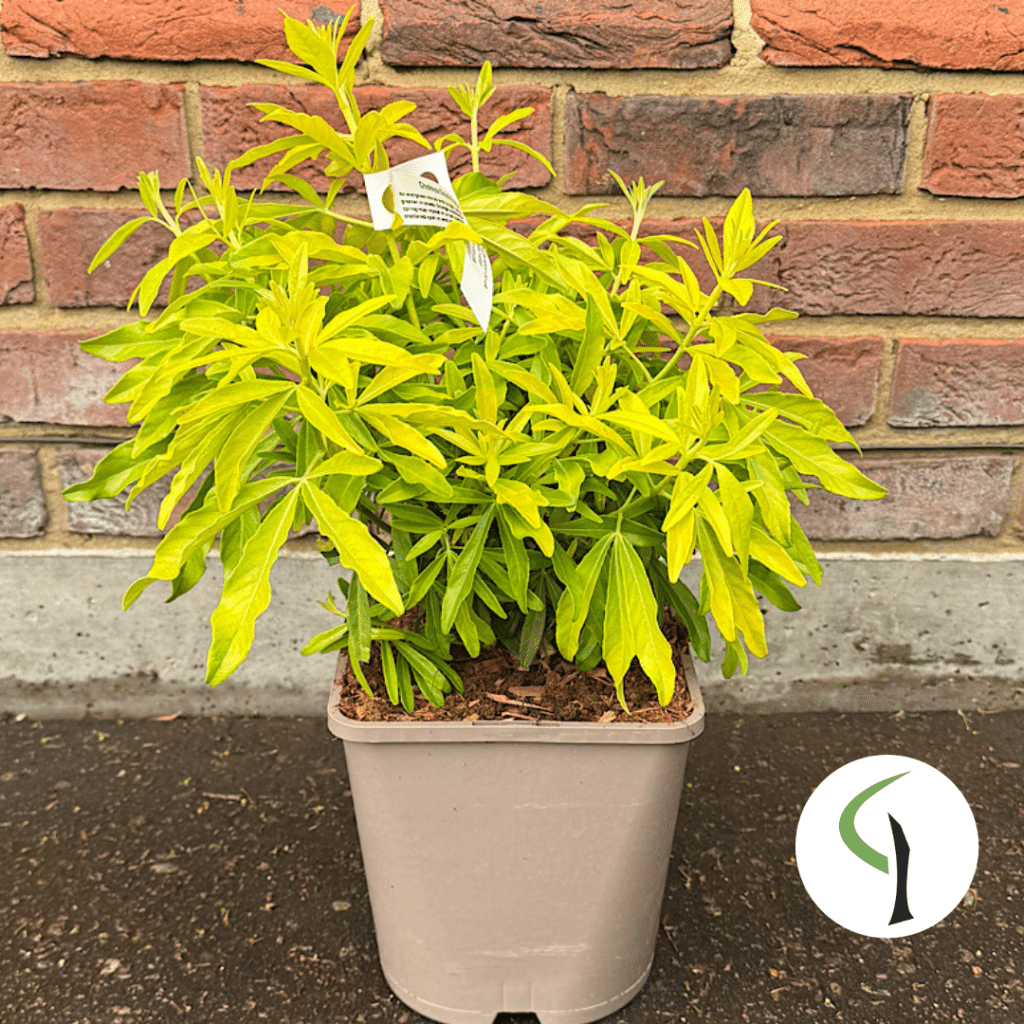
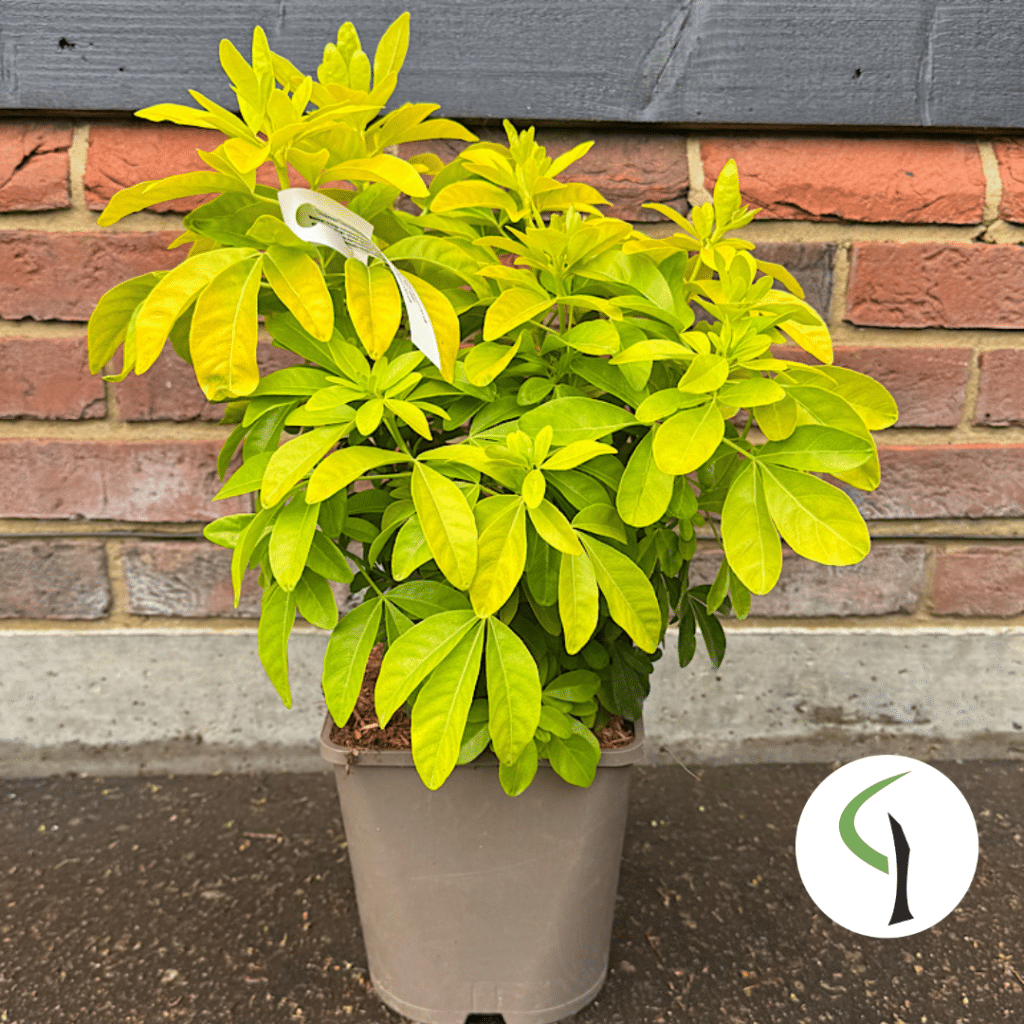
Ceanothus thyrsiflorus repens (California lilac) is a low-maintenance option. This spreading shrub needs little pruning and produces clouds of blue flowers in spring and early summer. It is ideal for informal hedges.
Ligustrum delavayanum is a compact evergreen shrub with dark green, ovate leaves. Tolerant of regular clipping is a great alternative to box and ideal for quickly forming a dense, tidy evergreen hedge.
Viburnum tinus ‘Eve Price’ is an underused gem with glossy foliage and charming pink-tinged white flowers through winter into early spring. It’s perfect for formal or informal low hedging, and it never fails to impress.
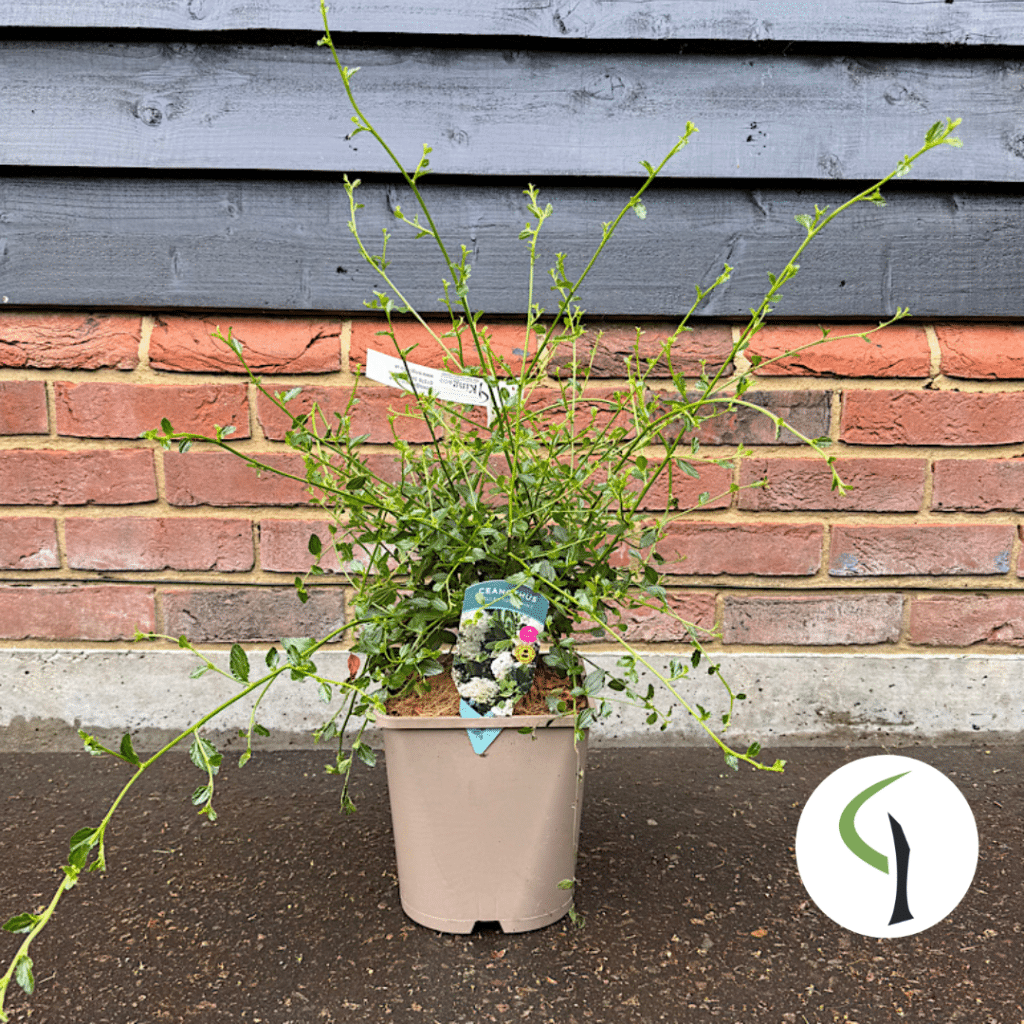
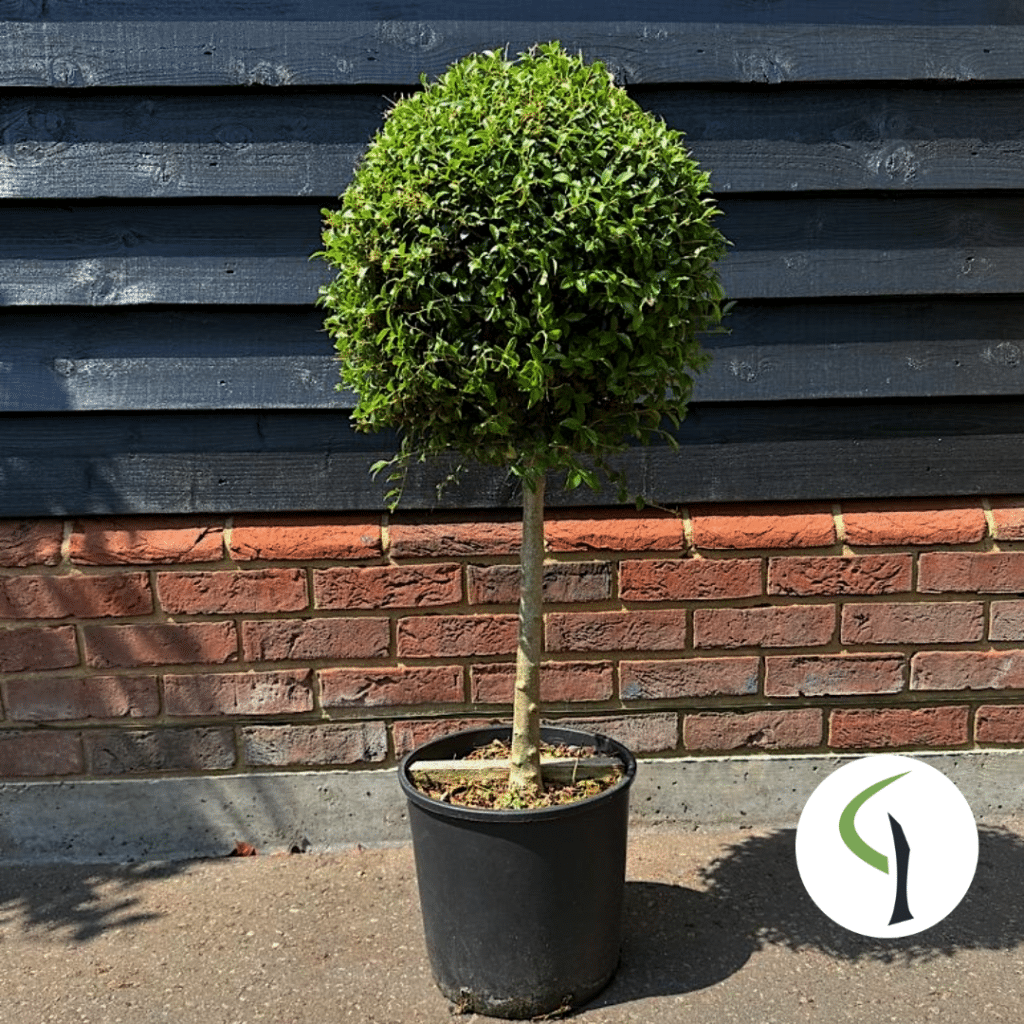
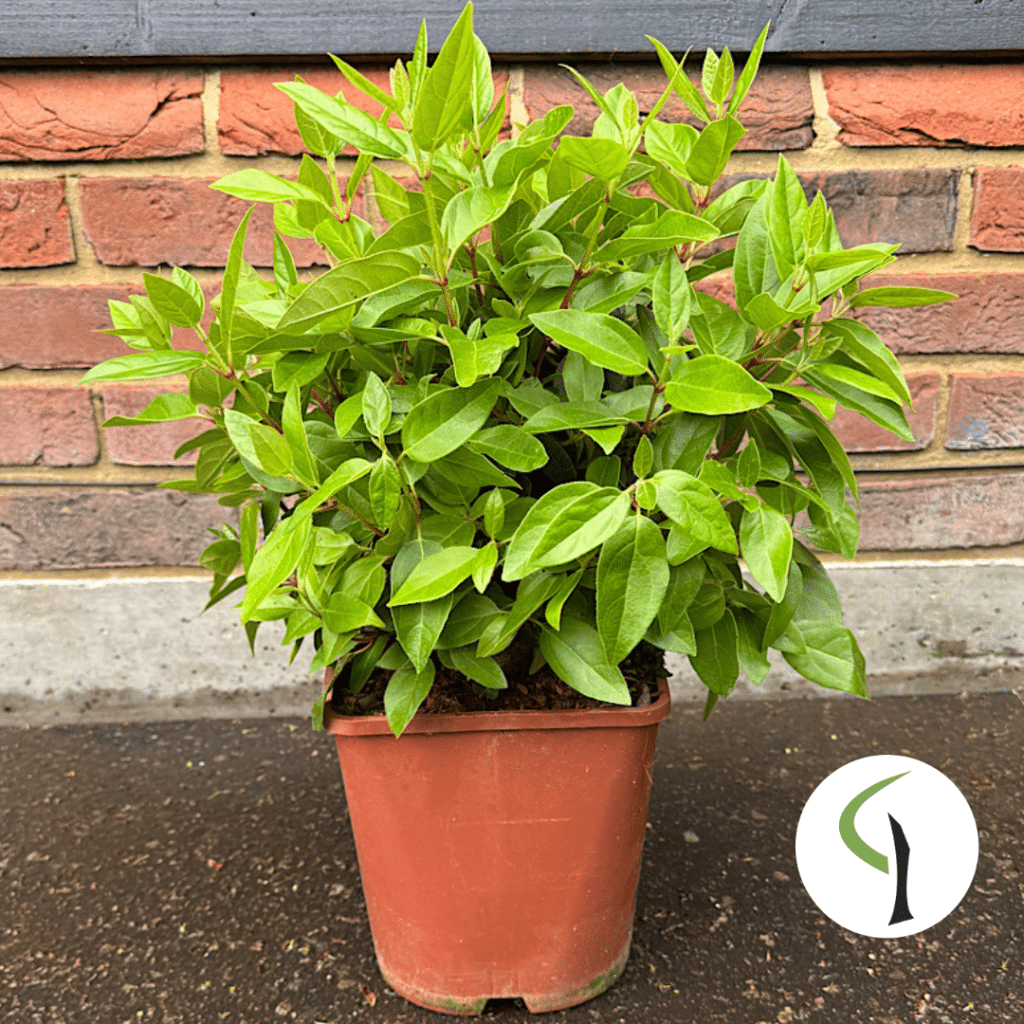
1. Visit Our Nursery to Pick your Own Trees!
2. Top 10 Screening Trees
3. How to create an Instant Hedge?
4. Planting Trees in Summer: Can you do it?
Gifting a tree or shrub has become increasingly popular in recent years. Perfect for birthdays or anniversaries, many customers also choose us to create their complete wedding list. Take a look at some of our favourite options below:
Japanese Maples like Acer palmatum ‘Going Green’ and Acer palmatum ‘Dissectum Garnet’ are elegant, slow-growing trees with stunning foliage that changes through the seasons. Their graceful shape and vibrant colours make them a long-lasting gift, perfect for marking special occasions.
Flowering Cherries such as Prunus ‘Kanzan’ and Prunus ‘Pink Perfection’ are known for their breathtaking spring blossom. Ideal for weddings or anniversaries, these trees make wonderful gifts as they bring beauty and joy each spring!
Fruit Trees are gifts that keep on giving year after year. We stock various Apple, Cherry, Pear and Plum trees that not only look beautiful but also offer the pleasure of homegrown fruit!
Magnolias, particularly Magnolia ‘Stellata’, are perfect for smaller gardens. With their striking white star-shaped blooms, they bring a touch of elegance and purity. Magnolia ‘Susan’, with its deep pink to purple flowers, also adds a pop of colour and makes a bold, yet refined, statement. These plants make thoughtful gifts for many occasions.
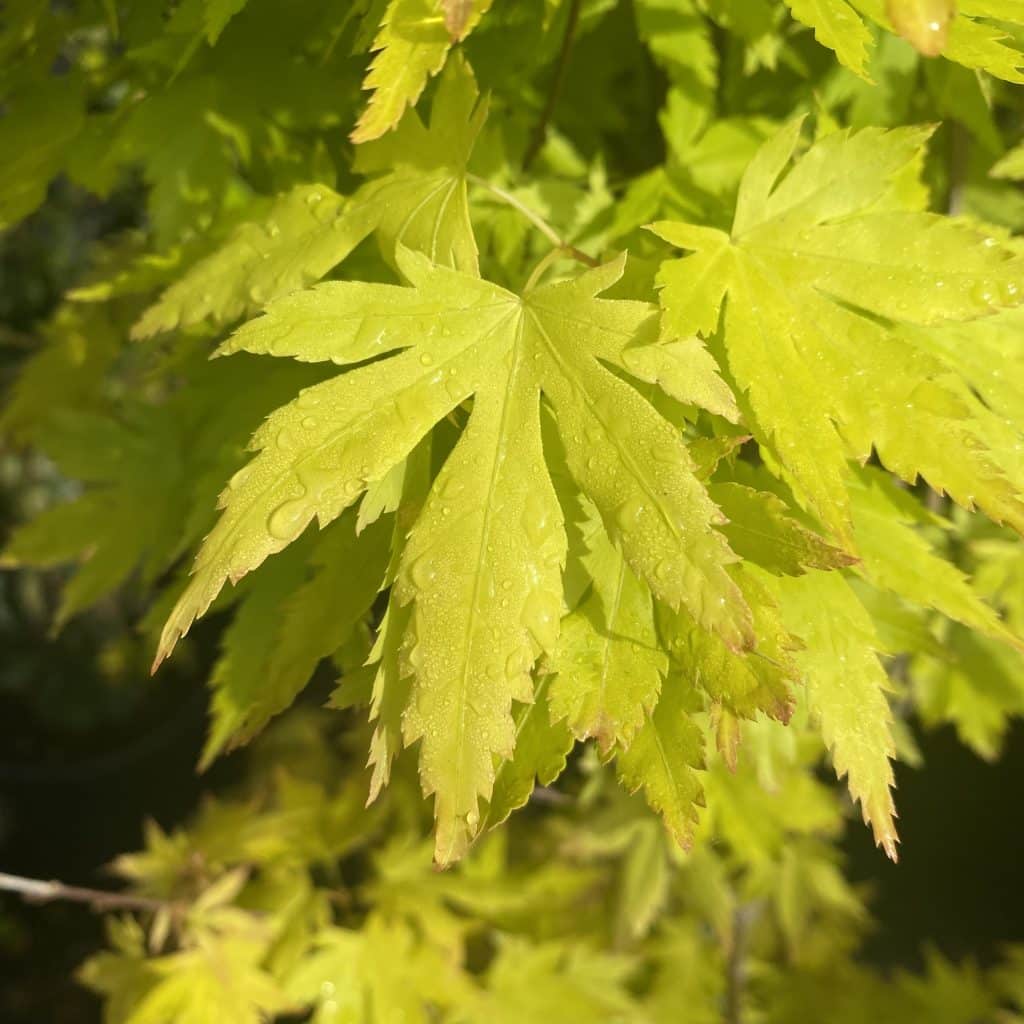
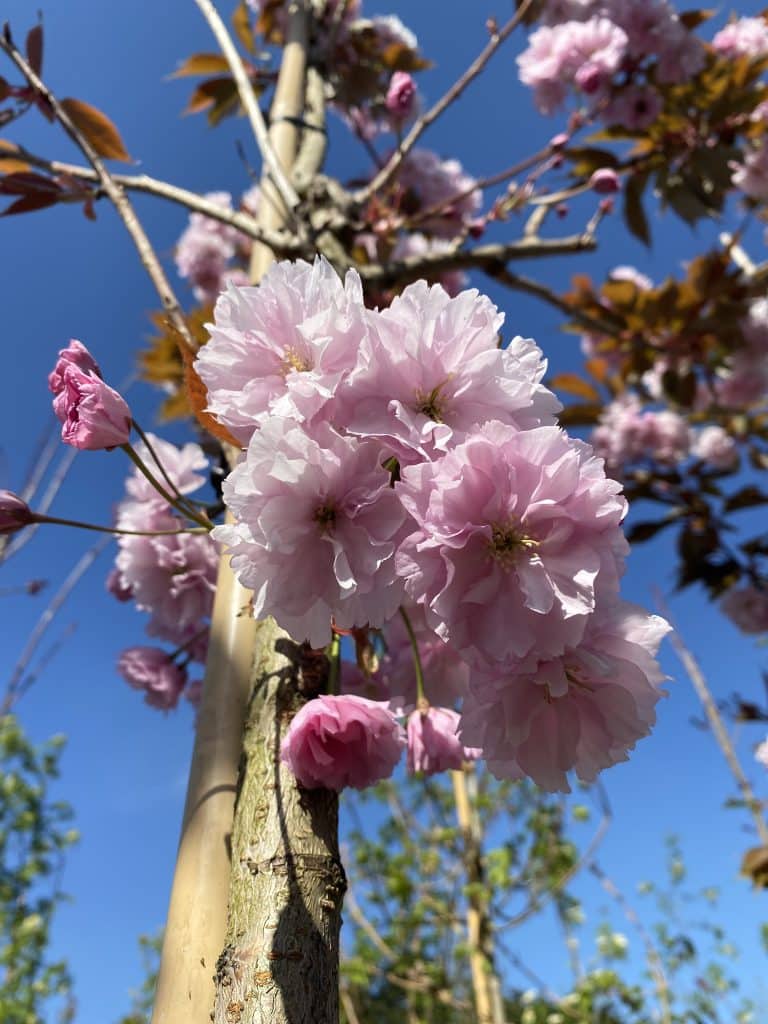
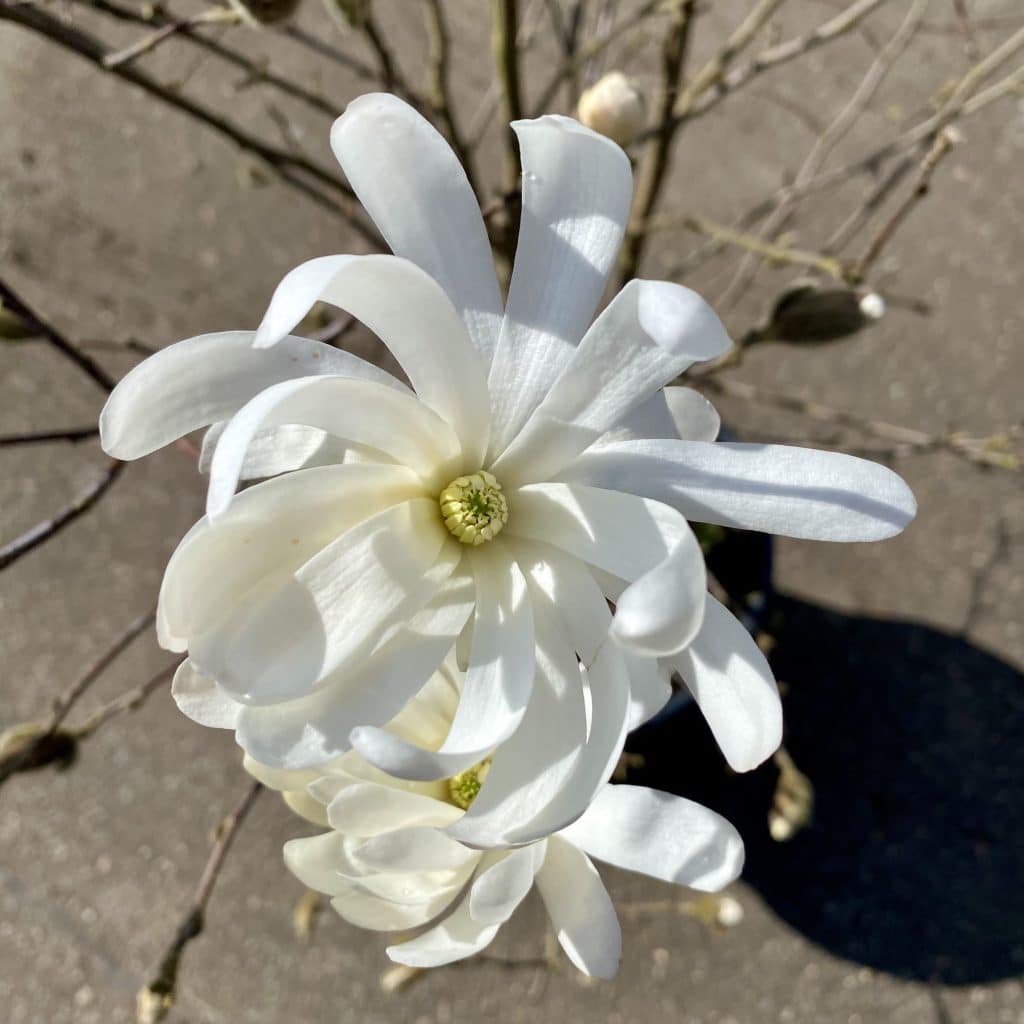
Gifting a tree or shrub is the perfect way to show your love! You’re welcome to visit our nursery and select the exact tree you want to gift, we can then deliver it to the recipient. If you live farther away, we can send photos of our current stock so that you can still make a choice. If you want to gift a tree as a wedding present, pick your tree or shrub before the big day, and we’ll arrange delivery after the honeymoon.
We can also supply gift cards to any value, perfect if you’d like the recipient to choose their own plants. You can collect the gift card, or we’re happy to post it directly to them!
1. How to create an Instant Hedge?
2. Visit Our Nursery to Pick your Own Trees!
3. Trees for Natural Summer Screening: Our favourite candidates for privacy and shade!
4. Planting Trees in Summer: Can you do it?
When investing in trees and hedging, choosing the right accessories and aftercare is key to ensuring your plants thrive.
We offer local customers a full installation service, including planting and staking. If you prefer to plant yourself, we provide expert advice on installation and aftercare. Proper staking is essential to keep your trees secure while they establish. Use round, peeled, pressure-treated stakes and buckle-style tree ties with collars to prevent stem damage. For larger trees, double staking works best.
Protection from predators should also be considered. Our specially designed deer mesh guards are simple to fit and highly effective. To stop rabbits from damaging young trees, spiral guards wrap around the stem to discourage nibbling.
Regular watering during the first one to two seasons keeps the soil moist and supports healthy growth. For more tips, check out this article or get in touch with us. In spring, you could also apply a slow-release fertiliser, high-nitrogen, to boost development. You could then mulch the trees to lock in moisture and stops weed, encouraging faster establishment.
Browse our extensive range of trees, hedging, shrubs, and accessories and aftercare products online. If you can’t find exactly what you’re looking for, simply email, call, or complete our enquiry form. We respond quickly with solutions tailored to your needs. All our plants are grown and viewable at our Rayne nursery near Braintree, just over an hour from London. Our experienced team is ready to help!
1. Planting Tips for Your Newly Planted Tree
2. Tree Care Tips: How to plant, water and maintain your trees
3. Planting Trees in Summer: Can you do it?
4. Trees for Natural Summer Screening: Our favourite candidates for privacy and shade!
5. Visit Our Nursery to Pick your Own Trees!
You can buy trees, hedging, shrubs and topiary online by browsing our website.
If you do not see a plant or size that is suitable for you then please call as we stock a wide variety of plants in our tree nursery. It’s worth noting that many other websites sell other people’s stock (i.e. they act as an agent) so you cannot view the products at their own site. At King & Co, all of our advertised plants are available for viewing at our tree nursery in Rayne, near Braintree, situated just over an hours drive out of London.
Our knowledgeable and experienced tree nursery staff are always contactable via phone on 01376 340469 or if you have any questions regarding any of our trees or accessories.
If you cannot see what you require on our website, please complete the enquiry form. We will give it our urgent attention and will get back to you shortly with a solution that meets your needs.
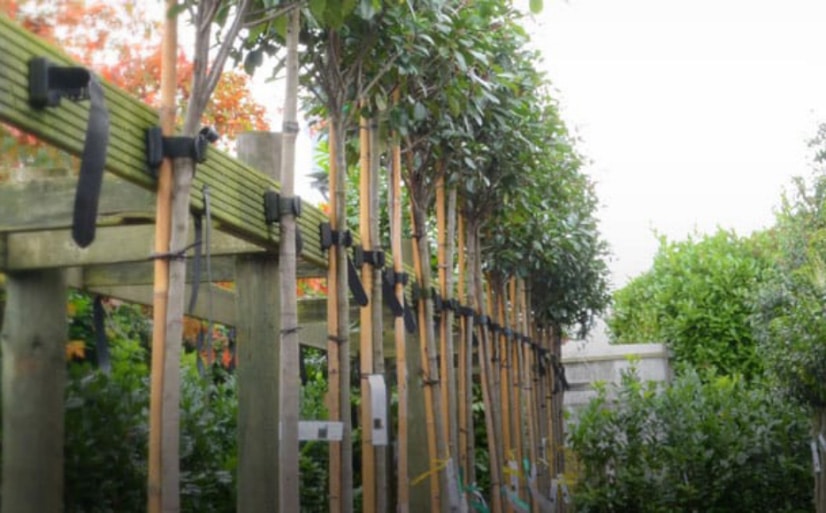
If you are looking for specific evergreen trees, Photinia, Leylandii hedging, Leylandii trees, instant hedging or shrubs, use the search bar at the top of the page